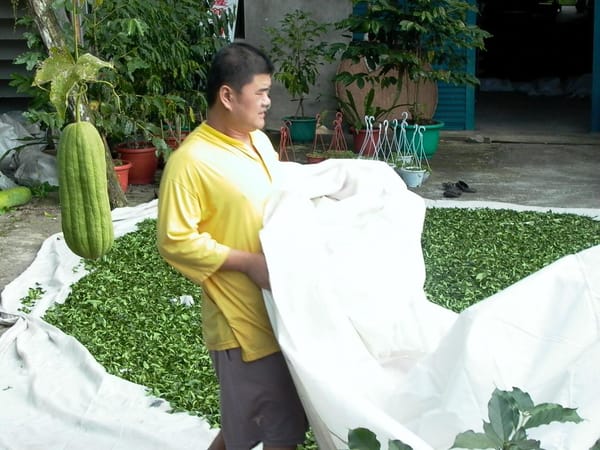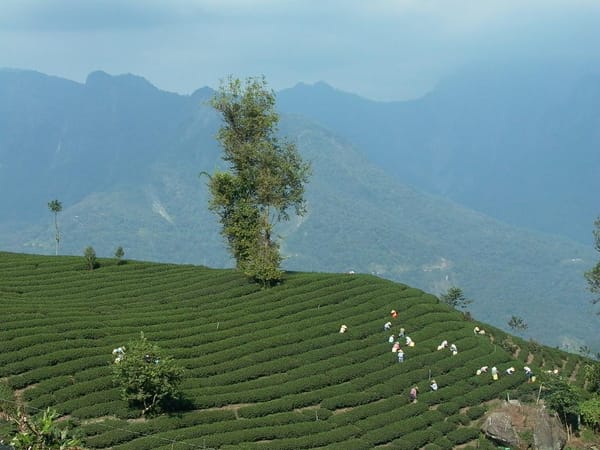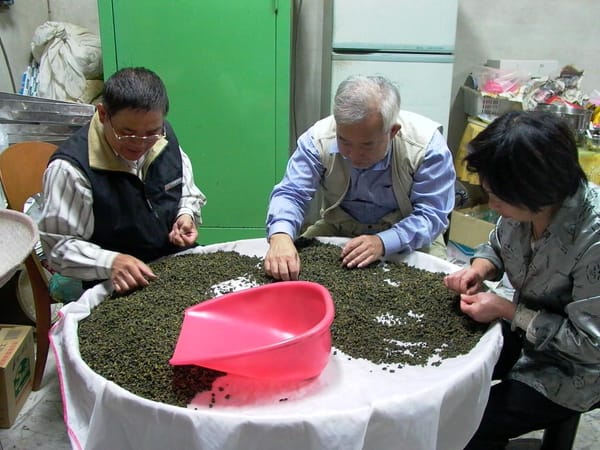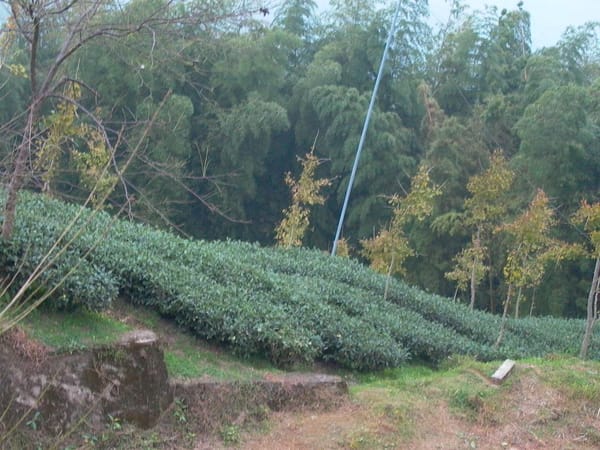In the history of Taiwan’s tea industry, an invisible revolution has been quietly unfolding. There were no flames, no wars, yet it profoundly reshaped the entire ecosystem of tea. At its core was a seemingly simple technical adjustment: shifting from traditional medium-fermentation to modern light-fermentation. Hidden behind this transformation, however, lies a complex market logic. It not only redefined the flavor standards of Taiwan Oolong tea but also reshaped the entire value chain—from tea farmers to consumers.
This revolution in taste can be traced back to subtle changes in judging criteria. When the phrase “winning with green leaves” (jian qing de jiang 見青得獎) became the new standard in Taiwan’s tea competitions, farmers realized the market winds had shifted. Judges began favoring light-fermented teas with bright aromas over medium-fermented teas with deep body. Like a butterfly effect, this shift in preference drove tea-making practices, and in turn, consumer behavior.
In the following sections, we will explore the market forces behind this fermentation shift, the technical differences between the two methods, their flavor characteristics, and how this transformation has restructured Taiwan’s tea industry.
The “Winning with Green Leaves” Signal
“Winning with green leaves!” — this expression vividly captures the fundamental change in Taiwan’s competition tea standards. By “green,” tea farmers refer to a honey-green liquor with floral fragrance, standing in sharp contrast to the golden liquor of medium-fermented Oolong. This change in judging preference sent a strong market signal, pointing to a deeper shift in consumer taste.
Competition tea standards strongly shape market trends. In Taiwan, winning in competitions often translates into significant economic gains and elevated brand value. When judges favored light-fermentation teas, farmers quickly adjusted their production methods to align with the new standards.
This judging shift also mirrored broader social trends. As lifestyles accelerated and younger demographics dominated, preferences moved from deep-bodied flavors to bright, refreshing aromas. Light-fermented teas, with their crisp fragrance, lowered the barrier for newcomers, broadening the consumer base.
The Traditional Strengths of Medium Fermentation
Traditional medium-fermentation represents the classic style of Taiwan Oolong. The experience of Zhang Shirong from Lugu, Nantou, illustrates its value: “The original medium-fermented rolling method produced golden liquor, more resistant to steeping (naipao), with a mellow taste and distinct hui gan (lingering sweetness).” Though labor-intensive, this method fully brings out the essence of Oolong.
Technically, medium fermentation demands mastery. From withering to oxidation to fixation, every step requires precision and intuition. This complexity yields Oolong teas with layered depth and enduring aftertaste.
Medium-fermented teas excel in longevity and complexity. Their golden liquor is rich and mellow, with a pronounced returning sweetness. Such qualities appeal to seasoned tea drinkers, offering profound tasting experiences. Farmers like Zhang who uphold this tradition maintain loyal clientele through quality.
The Market Adaptability of Light Fermentation
The rise of light fermentation reflects Taiwan’s adaptive response to market changes. This method highlights freshness, producing a honey-green liquor with elegant fragrance. Unlike the complex depth of medium-fermented teas, light-fermented teas feature straightforward, accessible aromas that appeal widely.
Technically, light fermentation requires controlling oxidation within 8–20%. This precision often relies on modern equipment and standardized techniques, marking the modernization of tea-making. While medium fermentation leans on artisan experience, light fermentation emphasizes replicability and control.
Its adaptability also matches modern lifestyles. With low barriers for appreciation, light-fermented teas suit fast-paced routines and appeal to younger demographics, making them easier to promote.
The Economic Drivers of Change
Behind the shift from medium to light fermentation lay strong economic incentives. Light-fermented teas’ market success brought tangible rewards. With judges and consumers favoring light fermentation, farmers sticking to medium fermentation faced shrinking market share.
Economic pressure pushed more farmers to adapt. While artisans like Zhang can sustain traditional craft through quality, most farmers pragmatically followed the trend. This reveals the industry’s growing commercialization.
Additionally, light fermentation offered efficiency. With its standardization and controllability, farmers achieved higher productivity and consistency, cutting costs while meeting demand.
Different Responses in Taiwan and Mainland China
Interestingly, Taiwan and Mainland China responded differently. In Taiwan, light fermentation has become mainstream, while in Mainland China’s emerging Taiwan-style tea market, it is even more celebrated. Mainland consumers quickly embraced the bright, floral qualities of light-fermented teas.
Tea regions such as Anxi, Fujian, adapted as well. Factories like Ba Ma adjusted their Tieguanyin production, aligning appearance and aroma with Taiwan high-mountain Oolong—though the unique “Guanyin yun” (Guanyin rhyme) remains distinct. This cross-regional adaptation underscores the influence of light fermentation.
Still, in Taiwan, some mature consumers continue to prefer the depth of medium-fermented teas. This provides survival space for traditional farmers.
Balancing Innovation and Tradition
The central question remains: how to balance innovation with tradition? Light fermentation brought market success, but also raised concerns over preserving cultural heritage. Artisans like Zhang argue medium fermentation best reveals Qingxin Oolong’s true character.
Thus, the issue extends beyond technique to cultural transmission. Abandoning tradition risks losing cultural depth. Promoting light fermentation while safeguarding medium-fermentation heritage is crucial.
Diverse consumer needs provide room for both. As long as consumers are educated about distinctions, both traditions can thrive.
Deeper Social Factors Behind Flavor Shifts
Taiwan’s flavor shift reflects broader societal changes. With modernization, lifestyles, values, and aesthetics all shifted, naturally shaping tea preferences.
Fast-paced modern life favors quick, direct sensory pleasures. Light-fermented teas deliver this. By contrast, medium-fermented teas require time and experience, embodying tradition’s contemplative pace.
Younger consumers drive this change. Less bound by tradition, open to novelty, their preferences shape market direction. The success of light fermentation owes much to their embrace.
Future Outlook
The fermentation shift provides vital lessons. It demonstrates Taiwan’s sensitivity to markets and the role of innovation.
Looking ahead, diversity and personalization will define the market. As experience deepens, consumer demand for unique qualities will expand. Both light and medium fermentation must elevate quality and innovate within their identities.
Balancing standardization with individuality will be key. Maintaining stable quality while preserving cultural uniqueness requires industry wisdom.
The market logic of Taiwan Oolong’s flavor shift teaches that success lies in balancing tradition and innovation, quality and demand, culture and commerce. This balance is never static—it must evolve dynamically with the times.





